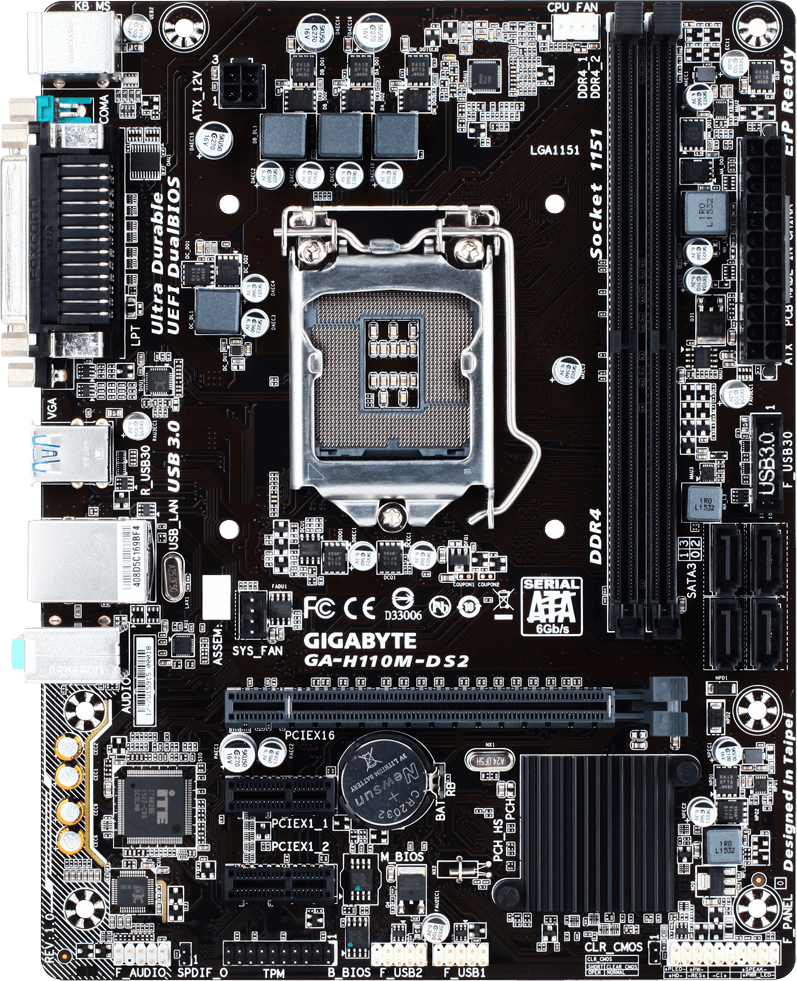

Other than that, the two chipsets are virtually identical and sport the same number or ports, etc. The Z97 supports overclocking, dynamic storage accelerators, and flexible PCIe lane configurations, while the H97 supports Intel's Small Business Advantage technology, which is similar to vPro technology, but is targeted at unmanaged environments. The main differences between the new Z97 and H97 are broken down in the table above. New to the 9-series chipsets is support for M.2 solid state drives and SATA Express. The chipset has support for Intel’s Rapid Storage Technology (RST) as well, along with RAID, Smart Response Technology, or SRT, and other features like FastBoot and HD Audio. You’ll also find native USB 3.0 support, with up to six USB 3.0 and eight USB 2.0 ports built in. The chipset itself is outfitted with 8 more PCIe 2.0 lanes, along with various other I/O, like six SATA ports and an integrated Gigabit MAC. The processors are linked to the chipset via Intel’s FDI (Flexible Display Interface) and a 20Gb/s DMI 2.0 interface. 1x16, 2x8, etc.) and they feature integrated dual-channel, DDR3 memory controllers with maximum officially supported speeds of up to 1600MHz (much higher speeds are possible with overclocking, however). Intel’s socket 1150 Core processors offer 16 lanes of PCI Express 3.0 connectivity on-die, which can be configured in a number of different ways on the Z97 (i.e. Like the previous-gen Z87 (and a few generations that came before it), the new Z97 is essentially an I/O hub, as all of the traditional Northbridge functionality previously found in a separate Northbridge chip has been integrated into the processor itself.

The high-level block diagram above gives a good visual representation of the Z97 chipset’s main features. The main differences between the two 9-series chipsets lie in their support for things like overclocking, Intel Smart Response Technology, and vPro management-related features, though we’ll step through specifics in more detail in just a bit. There is another 9-series chipset planned as well, namely the H97.

The Z97 Express chipset was designed to be a modern companion to Intel’s high-end Haswell-based desktop processors, that adds more high speed SATA ports and M.2 / SATA Express SSD support, but it is also ready for next-gen Broadwell-based processors, which we should be hearing about shortly. We tested a quintet of Z97 based motherboards from MSI, EVGA, and Gigabyte, using Intel’s current flagship Haswell-based processor, the Core i7-4770K. Z97 Based Motherboard From Gigabyte, EVGA, and MSI Intel’s 9-series chipset isn’t quite as extensive as previous families (there are just two options at this time), but the new capabilities it brings to the table will be welcomed by everyone from hardcore overclockers to IT types and business users.

Although Intel isn’t quite ready to take the wraps off of its updated Haswell-based processors ( codenamed Devil’s Canyon) or its next-gen Broadwell-based processors, the company is at the ready with a brand new chipset that ups the ante in terms of features and overall performance.


 0 kommentar(er)
0 kommentar(er)
